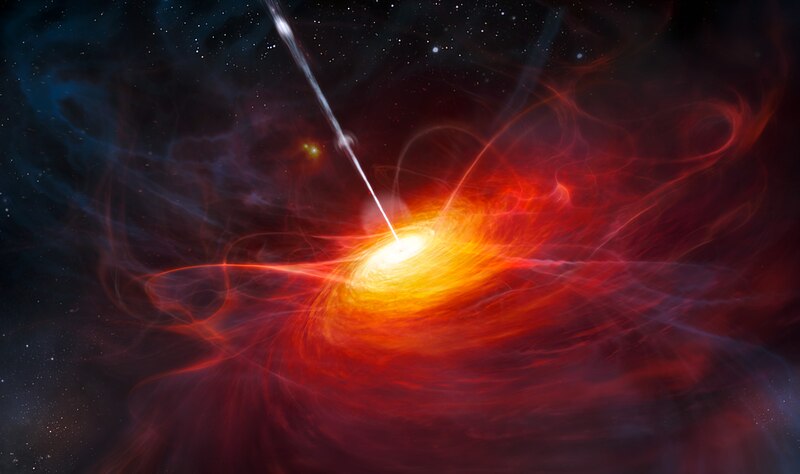
From Scientific American:
A dozen quasars in the early universe appear to have shut down in just a few years, baffling astronomers
…
Last year Stephanie LaMassa from NASA Goddard Space Flight Center (then at Yale University) discovered the greatest change in luminosity ever detected in a quasar. She was digging through data from the Sloan Digital Sky Survey when she found that a quasar had dimmed in brightness by a factor of six in just 10 years. Its spectrum changed, too, from that of a classic quasar to a regular galaxy.
…
There is nothing controversial about the idea that active galactic nuclei can become inactive. What LaMassa and her colleagues doubted was that a quasar could go from active to inactive in just 10 years. Such a dramatic change should occur on a timescale that dwarfs human lifetimes. They looked for different explanations but did not find any that satisfied them. So when LaMassa presented her results at the January 2015 American Astronomical Society meeting in Seattle, it set in motion a rush among the astronomical community to explain her disappearing quasar—and find new ones.
For his part, Krolik thinks the most likely explanation for changing-look quasars is simple variation. Statistically speaking, it is very unlikely that astronomers just happened to look at these objects, which have lifetimes of billions of years, at the very moments they snuffed out forever. We already know that quasars flicker, varying in brightness by a factor of up to three, Krolik says. A factor of six—although unexplained—is not too far off. And one of the 12 newly discovered objects did not just disappear but reappear. Krolik thinks that this lonely quasar blazed back into existence for the same reason that it flickered out: a variation in the gas and dust flowing onto the black hole. More.
Well, if quasars pop in and out, we may see stranger things yet. Stay tuned.
See also: Cosmology, the skinny
Follow UD News at Twitter!